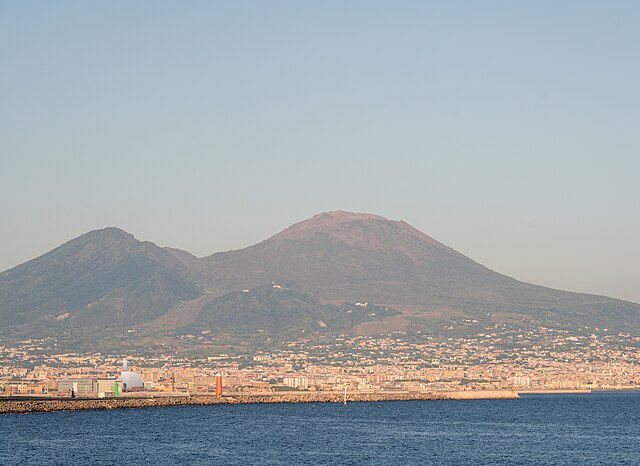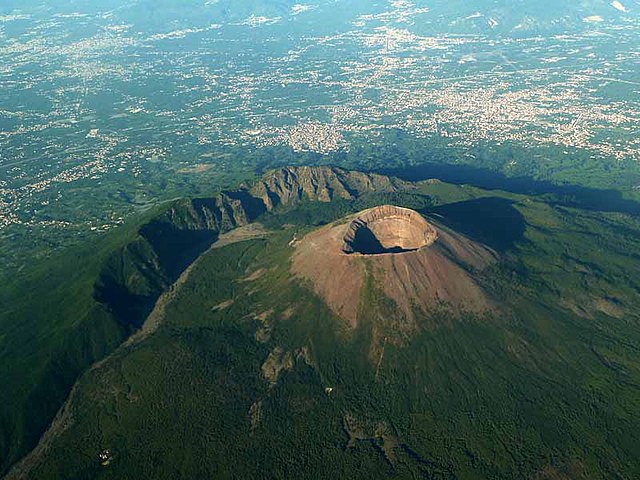Mount Vesuvius is a somma-stratovolcano located on the Gulf of Naples in Campania, Italy, about 9 km (5.6 mi) east of Naples and a short distance from the shore. It is one of several volcanoes forming the Campanian volcanic arc. Vesuvius consists of a large cone partially encircled by the steep rim of a summit caldera, resulting from the collapse of an earlier, much higher structure.
Mount Vesuvius
City of Naples with Mount Vesuvius
The main cone of Vesuvius and the cliff of Monte Somma's caldera separated by the valley of Atrio di Cavallo
Famous view of Vesuvius and the historic Pine of Naples overlooking the city of Naples in the 19th century, by Giorgio Sommer
A stratovolcano, also known as a composite volcano, is a conical volcano built up by many layers (strata) of hardened lava and tephra. Unlike shield volcanoes, stratovolcanoes are characterized by a steep profile with a summit crater and periodic intervals of explosive eruptions and effusive eruptions, although some have collapsed summit craters called calderas. The lava flowing from stratovolcanoes typically cools and solidifies before spreading far, due to high viscosity. The magma forming this lava is often felsic, having high to intermediate levels of silica, with lesser amounts of less viscous mafic magma. Extensive felsic lava flows are uncommon, but have traveled as far as 15 km (9 mi).
Mount Rainier, a 4,392 m (14,411 ft) stratovolcano, the highest point in the US state of Washington
Exposed internal structure of alternating layers of lava and pyroclastic rock in the eroded Broken Top stratovolcano in Oregon
Mount Etna on the island of Sicily, in southern Italy
Snow-like blanket of Mount Pinatubo's ashfall deposits in a parking lot on Clark Air Base (June 15, 1991)








